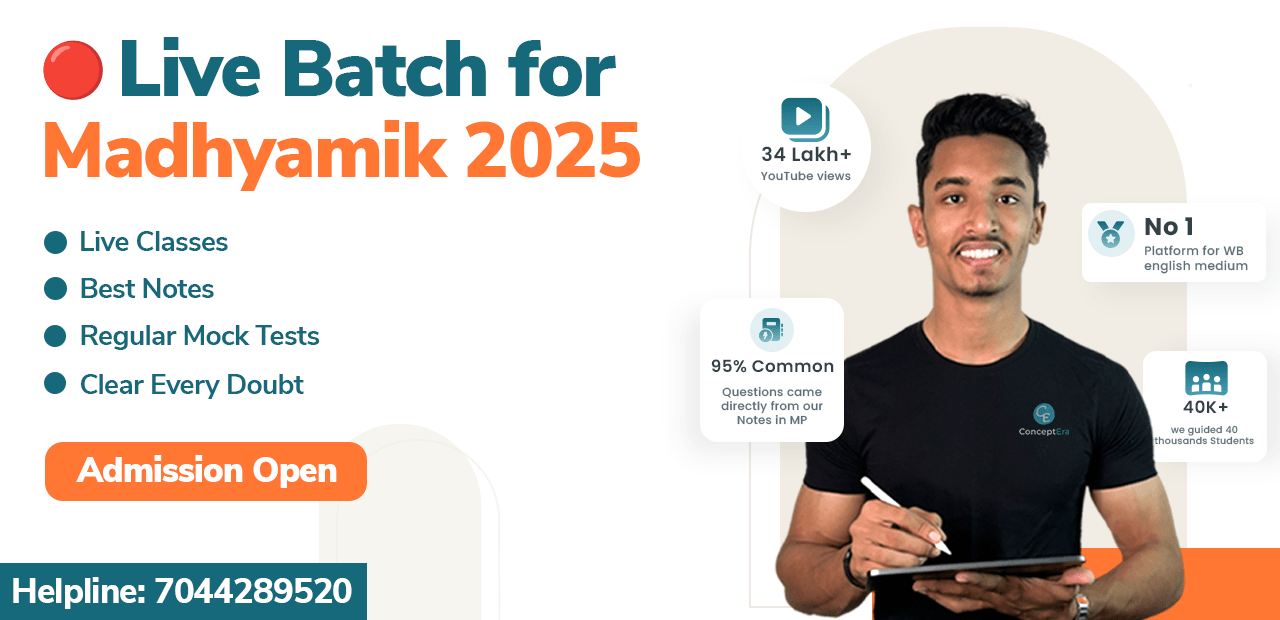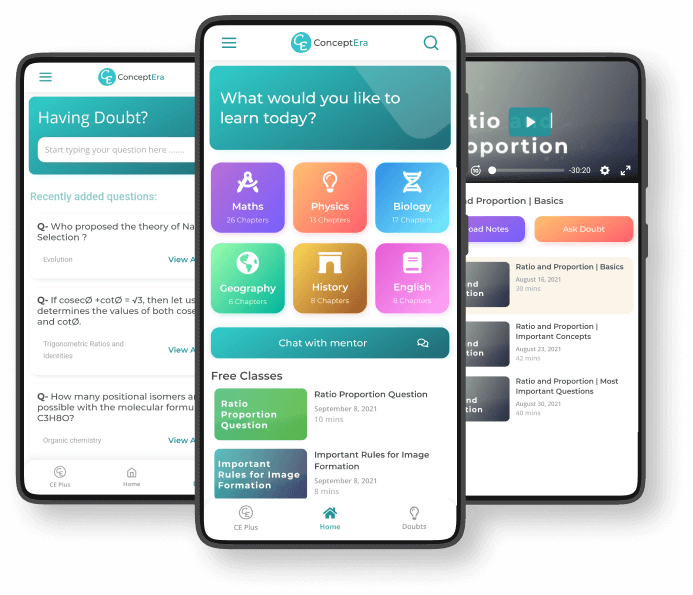Group A
1.Multiple choice question.
1.1World Environment Day is observed on—
(a) 8th January
(b) 24th February
(c) 8th March
(d) 5th June
1.2 Indians learnt about the use of the potato from–
(a) the Portuguese
(b) the English
(c) the Mughals
(d) the Dutch
1.3 The first official education Commission (Hunter Commission) was formed in—
(a) 1872 A.D.
(b) 1878 A.D.
(c) 1882 A.D.
(d) 1890 A.D.
1.4 Debendranath Tagore joined the Brahmo Samaj in –
(a) 1830 A.D.
(b) 1833 A.D.
(c) 1843 A.D.
(d) 1850 A.D.
1.5 The Renaissance in Bengal was —
(a) tribal communities
(b) intuition centred
(c) Calcutta based
(d) village based
1.6 The beneficiaries of the Second Forest Law (1878) were—
(a) tribal communities
(b) the British Government
(c) the merchant classes
(d) both the British government and the tribal communities
1.7 The word `hool` denoted —
(a) God
(b) Freedom
(c) Weapons
(d) Revolt
1.8 The main objective of the Queen`s Proclamation (1858) was—
(a) to gain the obedience of the Indian people
(b) to give the British the right of monopoly of trade in India
(c) to grants the rights of self-determination to the Indian subjects
(d) to release the Indian prisoners of the Great Revolt of 1857
1.9 The president of the Landholders Society was —
(a) Raja Radhakanta Deb
(b) Prasanna Kumar Tagore
(c) Raja Rammohan Roy
(d) Dwaraka Nath Tagore
1.10 The Secretary of the Hindu Mela was —
(a) Nabagopal Mitra
(b) Ganendranath Tagore
(c) Rajnarain Bose
(d) Gaganendranath Tagore
1.11 The year in which the first Bengali book was printed was —
(a) 1556 A.D.
(b) 1778 A.D.
(c) 1785 A.D.
(d) 1800 A.D.
1.12 The first Principle of Bengal Technical Institute was —
(a) Aurobindo Ghosh
(b) Satish Chandra Bose
(c) Jogesh Chandra Bose
(d) Pramatha Nath Bose
1.13 The person known as `Deshapran` was —
(a) Satish Chandera coast
(b) Aswini Kumar Dutta
(c) Birendra Nath Sasmal
(d) Jatindra Mohan Sengupta
1.14 The Moplah Revolt (1921) took place in —
(a)the Malabar coast
(b) the Konkan coasts
(c) the Godavari basin
(d) the Telangana region
1.15 The Meerut Conspiracy Case (1929) was instituted against—
(a) the Indian National Congress
(b) the revolutionaries
(c) trade union leaders
(d) peasant leaders
1.16 The Satyagraha Samati was founded during
(a) the Anti Partition Movement in Bengal
(b) the Non-Cooperation Movement
(c) the Civil Disobedience Movement
(d) the Quit India Movement
1.17 The person known as Master da was—
(a) Beni Madhav Das
(b) Surya Sen
(c) Krishna Kumar Mitra
(d) Hem Chandra Ghosh
1.18 The Self-Respect Movement in Madras was started by—
(a) Ramaswani Naicker
(b) Narayan Guru
(c) Bhim Rao Ambedkar
(d) Gandhiji
1.19 The largest Princely State in India on the eve of Independence was—
(a) Kashmir
(b) Junagarh
(c) Hyderabad
(d) Jaipur
1.20 The reorganized state of Kerala was situated in —
(a) the Godavari basin
(b) Southern Orissa
(c) the Kathiawad peninsula
(d) the Malabar coasts
Group B
2. Answer the following questions (attempt ne question from each sub group in all answer 16 questions):
Sub group: 2.1
Answer each of the following questions in one sentence:
(2.1.1) What is the name of the autobiography of Bipin Chandra Pal?
(2.1.2) Who was the first Indian Vice-Chancellor of Calcutta University?
(2.1.3) In which year was the Indigo Commission formed?
(2.1.4) Who wrote Barna Parichay?
Sub Group: 2.2
Identify which of the following is true or false:
(2.2.1) The book `Nadiya Kahini` belongs to Urban History.
(2.2.2) Baba Ram Chandra was a leader of Brahmo Samaj.
(2.2.3) Subhas Chandra Bose founded the Forward Bloc.
(2.2.4) `Lakshmir Bhandar` was founded by Basanti Devi.
Sub Group: 2.3
Match Column A with Column B:
| Column A | Column B |
|---|---|
| 2.3.1) Thomas Babington Macaulay | 1) Landholder’s Society |
| 2.3.2) Keshab Chandra Sen | 2) Bartaman Bharat |
| 2.3.3) Raja Radhakant Deb | 3) Western Education |
| 2.3.4) Swami Vivekananda | 4) Nababidhan |
Sub Group: 2.4
On the given outline Map of India, locate and label the following places:
(2.4.1) A centre of the Wahabi movement in Bengal – Barasat.
(2.4.2) A centre of the Indigo Revolt – Jessore-Nadia.
(2.4.3) One of the centres of the Great Revolt (1857) – Meerut.
(2.4.4) The reorganised state (1960) of Maharashtra.
Sub Group: 2.5
Select the correct in interpretation of the following statements:
(2.5.1) Statement : Halhead wrote his Bengali Grammar to tech the Bengali language to the British officials.
Interpretation 1: As the British officials in India liked Bengali language and literature
Interpretation 2: As knowledge of Bengali language was essential for their promotion.
Interpretation 3: As it was essential for the British officials to know the Bengali language in order to carry out commerce and administration in this country.
(2.5.2) Statement: The Bardauli Satyagraha was instituted in 1928 A.D.
Interpretation 1: It was a movement of the poor landless agricultural labourers against the exploitation of rich landed peasantry.
Interpretation 2: It was a movement against the increased revenue demand of the Government by the rich landed peasantry.
Interpretation 3: It was a joint movement of both the rich landed Peasantry and the landless agriculture labourers Against the revenue hike by the Government.
(2.5.3) Statement: Bhogeshwari Phukonani was killed in police firing During the Quite India movement (1942).
Interpretation 1: Bhogeshwari Phukonani was killed in an armed Encounter with the police.
Interpretation 2: The fugitive Bhogeshwari Phukonani was shot Dead by the police when she refuses to surrender.
Interpretation 3: Bhogeshwari Phukonani was shot dead by the police while trying to hoist the national flag at the police station in Nowgong District of Assam.
(2.5.4) Statement: Gandhiji began a fast unto death in protest against the provision of separate electorate for the Depressed
Classes granted in the communal Award (1932).
Interpretation 1: Gandhiji was opposed to the electoral rights of the Depressed Classes.
Interpretation 2: Gandhiji began his fast to oppose the attempt to create a division within the Hindu Community
Interpretation 3: Gandhiji began his fast of protest at the direction of the Indian National Congress.
Group-C
3. Answer the following questions in two or three sentences (any eleven):
3.1 What are the limitations of government documents as sources of modern Indian history?
3.2 What is meant by Autobiography and Memoir?
3.3 What was the principal objective of the Christian missionaries in introducing Western education in India?
3.4 What is meant by ‘Nababidhan’?
3.5 What was the significance of the Chuar Revolt (1798-1799)?
3.6 Was the Farazi Rebellion simply a religious movement?
3.7 With what objective was the Landholders’ Society founded?
3.8 What was the contribution of the novel ‘Anandamath’ to the rise of national awakening in the 19th century?
3.9 What was the impact of the development of the printing press on the cultural life of Bengal?
3.10 Why was the colonial system of education defective?
3.11 What were the causes of the Moplah Revolt (1921)?
3.12 With what objective was the Congress Society party founded?
3.13 Why did the women of Bengal observe Arandhan (non-cooking) on 16th October 1905?
3.14 Why is Nanibala Devi remembered?
3.15 Why is sardar Patel Called “The Iron Man of India”?
3.16 Under what circumstances was the state Reorganisation Commission (1953) constituted?
Group D
4. Answer the following questions in seven or eight sentences each. Attempt one question from each sub-group. Answer six questions in all.
4.1 Why is Wood’s Despatch (1854) called the Magna Carta of the spread of education in India?
4.2 Explain Sri Ramakrishna’s ideas of Sarva Dharma Samanwaya (religious harmony).
Sub-group: D.2
4.3 What was the attitude of the educated Bengali society towards the Great Revolt (1857)?
4.4 Analyse the role of Surendranath Banerjee in the foundation and development of the Indian Association.
Sub-group: D.3
4.5 What was the attitude of the Indian National Congress towards the Bardauli Satyagaraha?
4.6 What was the role of the working class during the Anti-Prtition Movement of Bengal?
Sub-group: D.4
4.7 How was the state of Junagadh integrated into the Indian Union?
4.8 What steps did the Indian Government take to solve the refugee problem?
Group E
5. Answer any one question in fifteen or sixteen sentences:
5.1 Give an idea of the various protests against the practice of Sati in the first half of the 19th century. How did Rammohan Roy achieve success in the movement against Sati?
5.2 Give a brief description of Rabindranath Tagore’s ideas on education and Shantiniketan.
5.3 Give a brief description of the Namashudra Movement in Bengal.

